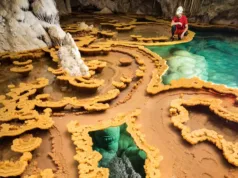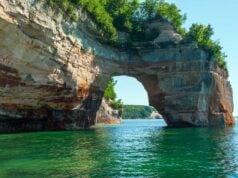El Capitan is not only a remarkable geological formation but also a renowned natural landmark located within Yosemite National Park in California, USA. This iconic granite monolith rises almost vertically from the Yosemite Valley floor, towering approximately 3,000 feet (900 meters) above the valley. El Capitan is situated in the heart of the Sierra Nevada mountain range and is a prominent feature of the park’s dramatic landscape.
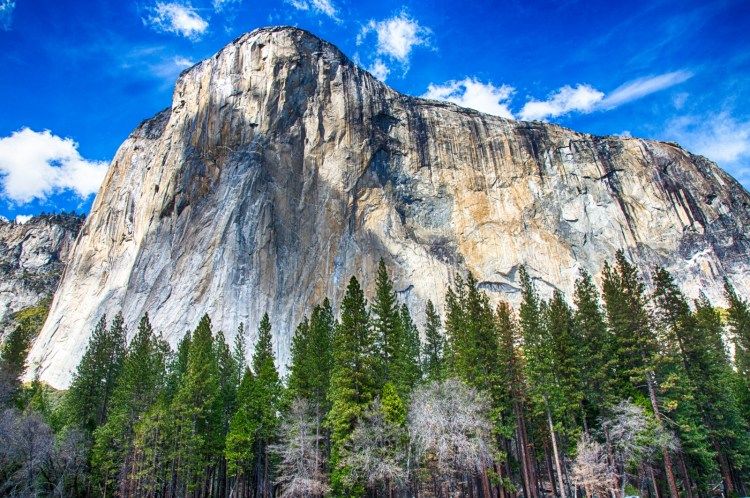


Geological Marvel: El Capitan is composed of a unique type of granite called El Capitan Granite, which is known for its exceptional strength and durability. Its sheer vertical face is the result of millions of years of geological processes, making it a captivating geological marvel and a subject of study for geologists and rock climbers alike.
Rock Climbing Mecca: El Capitan is world-famous for its challenging rock climbing routes. Climbers from around the globe are drawn to its towering cliffs, with routes that vary in difficulty and length. “The Nose” and “The Dawn Wall” are two of the most famous climbing routes on El Capitan, each known for its extreme difficulty and allure to experienced climbers.
Scenic Beauty: Beyond its geological and recreational significance, El Capitan’s majestic presence enhances the scenic beauty of Yosemite National Park. It is a popular spot for photographers, hikers, and nature enthusiasts, offering breathtaking views of the surrounding valley, waterfalls, and the iconic Half Dome rock formation in the distance.
Cultural and Historical Importance: El Capitan holds cultural and historical importance as well. Native American tribes, such as the Ahwahneechee, have long held the area as sacred, and its name has origins in their language. Additionally, the park’s history includes tales of early explorers and settlers who marveled at the imposing sight of El Capitan.
Conservation and Protection: El Capitan is located within Yosemite National Park, a UNESCO World Heritage Site, and a protected area that aims to preserve the natural beauty and ecological significance of this region. The preservation of El Capitan and its surroundings is vital for future generations to appreciate and enjoy.
In summary, El Capitan’s location in Yosemite National Park, its geological uniqueness, rock climbing challenges, stunning natural beauty, cultural significance, and the park’s commitment to conservation all contribute to its considerable significance in the world of natural landmarks and outdoor recreation. It remains a symbol of the grandeur and diversity of America’s national parks and wilderness areas.
Formation of El Capitan
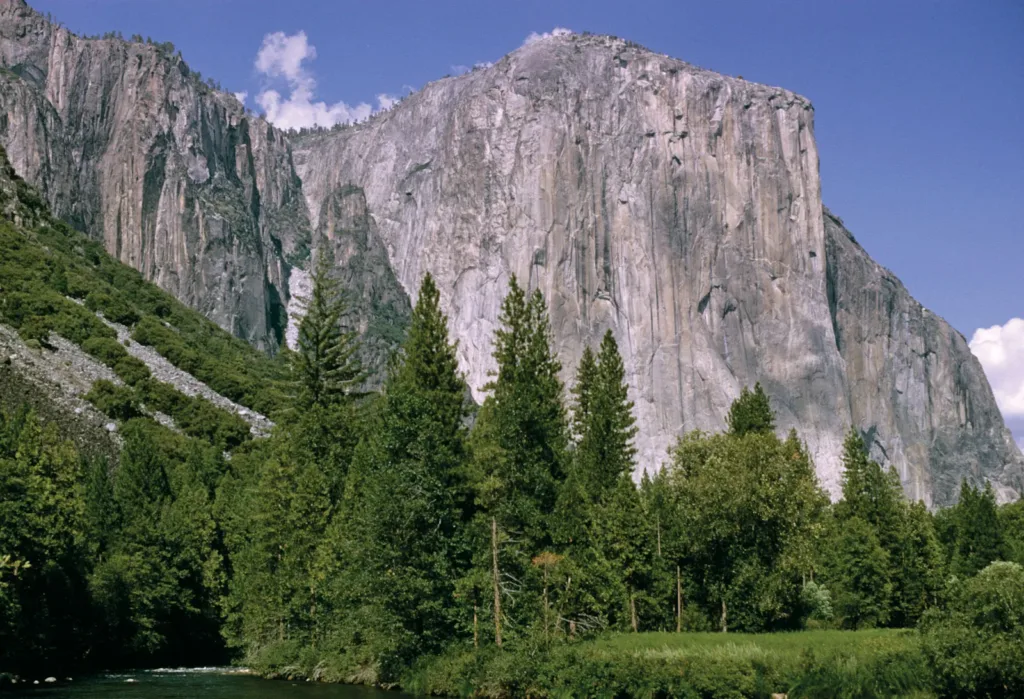
The formation of El Capitan and the surrounding Sierra Nevada Mountains is a result of complex geological processes that unfolded over millions of years. Here’s an overview of the geological history of the region and how El Capitan’s distinctive granite features prominently in its formation:
- Geological History of the Region:
- The geological history of the Sierra Nevada region dates back hundreds of millions of years. It began with the accumulation of sediments on an ancient seafloor.
- Around 100 million years ago, during the Cretaceous period, tectonic plate movements initiated the uplift of the Sierra Nevada region. The Farallon Plate subducted beneath the North American Plate, leading to intense geological activity.
- Formation of the Sierra Nevada Mountains:
- The primary factor contributing to the formation of the Sierra Nevada Mountains is the process of plate tectonics. The subduction of the Farallon Plate beneath the North American Plate resulted in the compression of the Earth’s crust.
- This compression caused the crust to buckle and uplift, forming a massive mountain range. Over millions of years, this uplift continued, and the Sierra Nevada Mountains gradually took shape.
- Role of Granite in El Capitan’s Formation:
- El Capitan is predominantly composed of a type of granite known as El Capitan Granite. Granite is an igneous rock that forms deep beneath the Earth’s surface when molten rock, or magma, cools and solidifies.
- The granite that makes up El Capitan was originally formed deep within the Earth’s crust. Over time, uplift and erosion exposed this granite at the surface.
- El Capitan Granite is notable for its exceptional durability and resistance to weathering. This durability is a key reason why El Capitan stands as a prominent monolith today.
- Influence of Tectonic Processes:
- Tectonic processes have played a critical role in shaping the Sierra Nevada Mountains, including El Capitan. The continued subduction of the Farallon Plate led to the uplift of the region.
- The immense pressure and heat generated by tectonic forces deep within the Earth’s crust caused the granite to slowly rise and form massive plutons. These plutons later became exposed due to erosion.
- Erosion, primarily driven by glaciation and the action of rivers and weathering, gradually wore away the surrounding rock, leaving the imposing, vertical face of El Capitan exposed.
In summary, the formation of El Capitan and the Sierra Nevada Mountains is a testament to the dynamic processes of plate tectonics, uplift, and erosion that have shaped the Earth’s surface over geological time. El Capitan’s iconic granite composition, coupled with tectonic forces and erosional processes, has created a geological wonder that continues to captivate scientists, rock climbers, and nature enthusiasts alike.
Composition and Structure
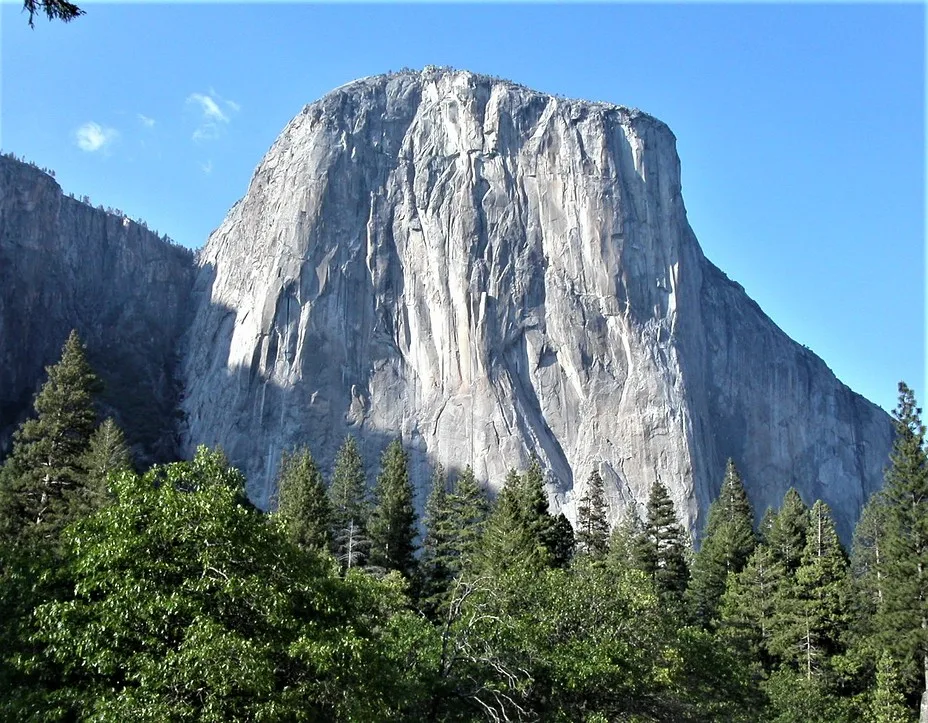
El Capitan is primarily composed of a type of rock known as granite. Granite is an igneous rock that forms deep within the Earth’s crust through a process called crystallization. Let’s explore the composition and structure of El Capitan in more detail:
Composition of El Capitan:
- Granite: The predominant rock type of El Capitan is granite. Granite is an intrusive igneous rock composed mainly of three essential minerals: quartz, feldspar, and mica. These minerals give granite its characteristic appearance, with a speckled or granular texture. Quartz provides hardness and durability, feldspar contributes to its color and structure, and mica can add a shimmering quality.
- Accessory Minerals: In addition to the primary minerals, granite may contain various accessory minerals and trace elements. These can include minerals like hornblende, biotite, and amphibole, which can impart additional color and texture variations to the rock.
Structure of El Capitan:
- Massive Monolith: El Capitan is a massive monolith, which means it is a single, large, and continuous rock formation with a nearly vertical orientation. Its sheer cliff face rises almost vertically from the valley floor, making it a prominent and imposing geological feature.
- Jointing and Fractures: Like many granite formations, El Capitan exhibits a network of joints and fractures. These fractures result from the cooling and contraction of the granite as it solidified deep within the Earth’s crust. Over time, these fractures can influence the formation of cracks and crevices on the rock face, which can be of particular interest to rock climbers seeking routes up the monolith.
- Veins and Inclusions: Within the granite of El Capitan, you may find mineral veins and inclusions. These are often the result of hydrothermal processes that occurred millions of years ago when hot fluids circulated through the rock and deposited minerals. These veins can vary in color and mineral composition.
- Stratification: El Capitan’s granite is generally massive and lacks distinct layers or stratification. Unlike sedimentary rocks, which often have clearly defined layers, granite forms through the cooling and solidification of molten magma, resulting in a more uniform and crystalline structure.
El Capitan’s composition and structure have made it a challenging and iconic destination for rock climbers, as well as a subject of geological interest. Its sheer, unbroken granite face, composed primarily of quartz, feldspar, and mica minerals, has drawn the attention of scientists, adventurers, and nature enthusiasts alike.
Geomorphology

The geomorphology of El Capitan and its surrounding area within Yosemite National Park is shaped by a combination of geological processes, erosion, and climatic factors. Here are some key aspects of the geomorphology in this region:
- Granite Monolith Formation: El Capitan itself is a prominent granite monolith, and its formation is the result of geological processes, primarily the cooling and solidification of molten magma deep within the Earth’s crust. Over millions of years, uplift and erosion exposed this granite monolith, which is known for its sheer, nearly vertical cliffs.
- Uplift and Tectonic Activity: The Sierra Nevada Mountains, including El Capitan, have been uplifted over millions of years due to tectonic forces. The subduction of the Farallon Plate beneath the North American Plate led to the compression and uplift of the region, forming these towering mountains.
- Glacial Activity: The Sierra Nevada Mountains experienced significant glacial activity during the last Ice Age. Glaciers carved out Yosemite Valley, shaping its distinctive U-shaped profile and contributing to the overall geomorphology of the region. The glacial action also played a role in shaping El Capitan’s cliffs and surrounding landscape.
- Rivers and Erosion: The Merced River flows through Yosemite Valley, and over time, it has played a crucial role in the erosion and shaping of the landscape. The river continues to transport sediment and shape the valley floor.
- Waterfalls: Yosemite National Park is renowned for its waterfalls, including Yosemite Falls, Bridalveil Fall, and others. These waterfalls have carved their own paths through the granite, contributing to the unique geomorphological features of the park.
- Talus Slopes: The base of El Capitan and other cliffs in the park often have talus slopes or scree slopes. These slopes consist of loose rocks and debris that have fallen from the cliffs above due to weathering and erosion. They contribute to the overall geomorphological character of the area.
- Weathering and Exfoliation: Granite undergoes various forms of weathering, including mechanical weathering and exfoliation. Exfoliation involves the gradual shedding of outer layers of rock due to expansion and contraction from temperature changes. This process can contribute to the formation of cracks and crevices on the rock surface.
- Cultural Significance: The geomorphology of the area also has cultural significance, as it has been revered and celebrated by indigenous tribes like the Ahwahneechee and has inspired countless artists, writers, and naturalists throughout history.
In summary, the geomorphology of El Capitan and Yosemite National Park is a product of geological forces, including tectonics, glacial activity, and erosion, as well as the unique properties of granite. The result is a stunning and iconic landscape that continues to captivate and inspire visitors from around the world.
Physical Characteristics

El Capitan, the famous granite monolith located in Yosemite National Park, possesses several distinctive physical characteristics that make it an iconic and recognizable landmark. Here are some of its notable physical attributes:
- Sheer Vertical Cliffs: El Capitan is renowned for its almost vertical, sheer granite cliffs that rise approximately 3,000 feet (about 900 meters) above the floor of Yosemite Valley. These towering cliffs make it one of the most impressive and challenging rock formations for climbers.
- Granite Composition: The primary rock type of El Capitan is granite, specifically El Capitan Granite. This granite is characterized by its coarse-grained texture and its speckled appearance, resulting from the interlocking crystals of quartz, feldspar, and mica.
- Monolithic Structure: El Capitan is a massive monolith, which means it is a single, continuous rock formation with little to no horizontal stratification or layering. Its monolithic nature contributes to its imposing and awe-inspiring presence.
- Exfoliation Features: Over time, the granite of El Capitan has undergone a process known as exfoliation, wherein outer layers of rock peel away due to the expansion and contraction caused by temperature fluctuations. This process has contributed to the formation of cracks, crevices, and exfoliation sheets on the rock surface.
- Talus Slopes: The base of El Capitan is often surrounded by talus slopes or scree slopes, which are composed of loose rocks and debris that have fallen from the cliffs above. These slopes result from weathering and erosion and are a common feature at the base of many granite formations.
- Prominent Features: El Capitan is home to several iconic features, including “The Nose” and “The Dawn Wall.” These are well-known rock climbing routes that have challenged climbers for decades, and they contribute to the monolith’s status as a premier climbing destination.
- Location in Yosemite Valley: El Capitan is situated in Yosemite Valley, a glacially carved U-shaped valley with towering cliffs and waterfalls, making it a prime example of the breathtaking natural beauty of Yosemite National Park.
- Cultural Significance: Beyond its geological attributes, El Capitan holds cultural significance as it has been a source of inspiration for Native American tribes, early European explorers, and modern-day artists, writers, and photographers.
- Changing Light and Shadows: The play of light and shadows on El Capitan’s granite cliffs, especially during sunrise and sunset, creates stunning visual effects that draw photographers and nature enthusiasts to capture its beauty at different times of the day.
In summary, El Capitan’s physical characteristics, including its towering vertical cliffs, granite composition, monolithic structure, and cultural significance, contribute to its status as one of the most iconic and recognizable natural landmarks in the world. Its unique features also make it a popular destination for rock climbers, hikers, and visitors seeking to experience the grandeur of Yosemite National Park.
Visitor Experience and Tourism
El Capitan and the surrounding Yosemite Valley offer visitors a remarkable and immersive experience, attracting millions of tourists from around the world each year. The combination of natural beauty, outdoor recreation opportunities, and cultural significance makes Yosemite National Park, and El Capitan in particular, a popular destination. Here’s an overview of the visitor experience and tourism in the area:
- Spectacular Scenery: Yosemite National Park, with El Capitan as one of its iconic features, is renowned for its stunning scenery. Visitors are treated to breathtaking vistas, including the imposing granite cliffs, lush forests, cascading waterfalls like Yosemite Falls and Bridalveil Fall, and the striking U-shaped Yosemite Valley.
- Outdoor Recreation: Yosemite offers a wide range of outdoor activities for visitors to enjoy. These include hiking along a network of trails, rock climbing on El Capitan and other formations, camping in scenic campgrounds, birdwatching, wildlife viewing, and more. The park’s diverse terrain provides options for both novice and experienced adventurers.
- Rock Climbing: El Capitan is a world-famous rock climbing destination. Climbers from around the globe come to challenge themselves on its sheer cliffs. The climbing routes vary in difficulty, offering opportunities for climbers of all levels. The climbing community is an integral part of Yosemite’s culture.
- Visitor Centers: Yosemite National Park has visitor centers and museums that provide information about the park’s geology, ecology, history, and recreational opportunities. Park rangers are available to offer guidance and educational programs to enhance the visitor experience.
- Photography and Art: The park’s dramatic landscapes, including El Capitan, have long been a source of inspiration for photographers and artists. The ever-changing light, especially during sunrise and sunset, creates stunning photographic opportunities.
- Cultural and Historical Interest: Yosemite’s history includes stories of Native American tribes, early European explorers, and conservationists like John Muir. The park’s cultural heritage is preserved and celebrated, adding depth to the visitor experience.
- Wildlife Viewing: Yosemite is home to a variety of wildlife, including black bears, deer, coyotes, and numerous bird species. Observing these animals in their natural habitat is a highlight for many visitors.
- Seasonal Activities: The park’s activities vary by season. In the summer, hiking, camping, and rock climbing are popular, while winter offers opportunities for cross-country skiing and snowshoeing. Spring and fall provide a quieter and less crowded experience.
- Tourist Facilities: Yosemite Valley has facilities such as lodges, restaurants, and gift shops to cater to tourists’ needs. Advanced reservations are often necessary, especially during peak visitation times.
- Conservation and Sustainability: Yosemite places a strong emphasis on conservation and sustainable tourism practices to protect the park’s natural and cultural resources for future generations.
- Accessibility: The park strives to make its attractions accessible to as many people as possible, with accessible trails, shuttle buses, and accommodations for individuals with disabilities.
In conclusion, the visitor experience and tourism in Yosemite National Park, including the awe-inspiring attraction of El Capitan, offer a harmonious blend of outdoor adventure, appreciation of nature, cultural enrichment, and a chance to explore one of the most iconic natural landscapes in the United States. Visitors can create lasting memories while respecting and preserving this cherished natural treasure.


























